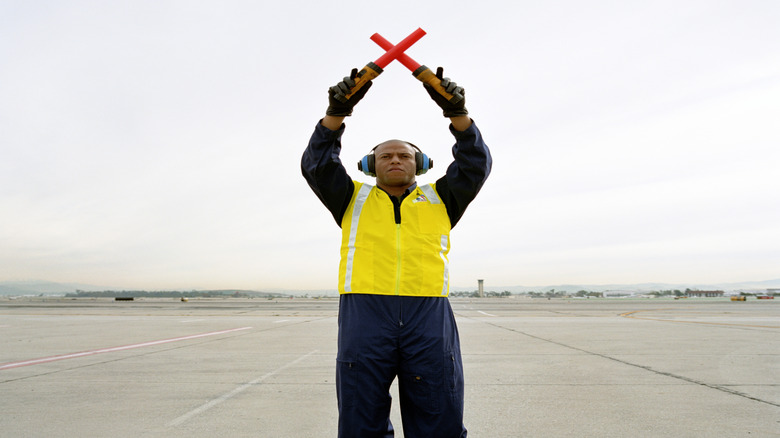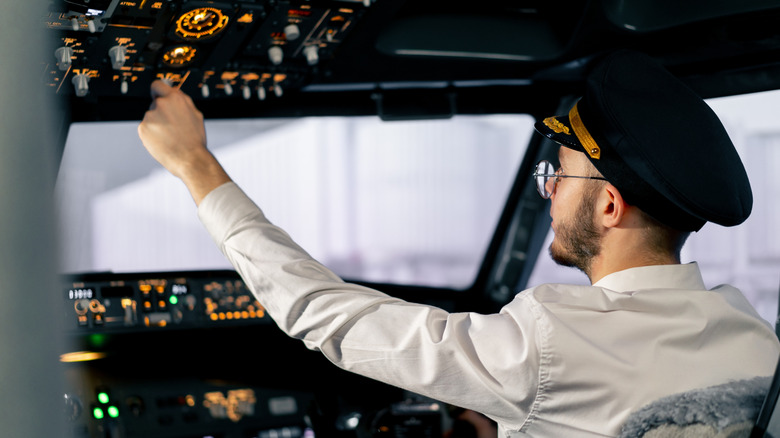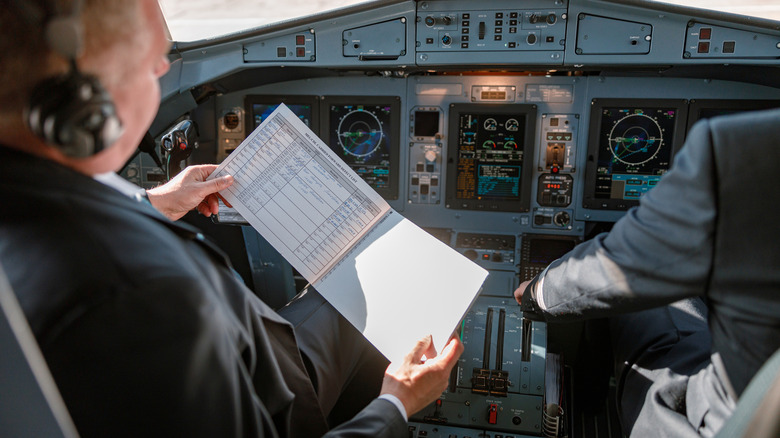What Is A Pilot Deviation And Why Is It Important To Avoid It?
We may receive a commission on purchases made from links.
Even if you're not a pilot, you may be interested to learn about the concept of pilot deviation. It occurs when a pilot fails to adhere to the instructions of their air traffic controller (ATC) or breaks one of the rules of the Federal Aviation Administration (FAA).
When a pilot hears the dreaded phrase, "possible pilot deviation, advise when ready to copy a phone number" from their ATC, they know they messed up. However, it's not always the end of the world. The consequences of committing a pilot deviation range from a simple warning to a complete revocation of your certificate to fly, though only serious incursions will lead to the latter.
But whatever the infraction's severity, the FAA doesn't take rule-breaking lightly. Thus, avoiding a pilot deviation warning is important whether you're a small-craft hobbyist or a commercial pilot. Such guidelines are paramount for the safety of pilots and their passengers.
The good news is that pilot deviations are easy to avoid. Becoming a pilot is very complex, which is one of the top things pilots wish people knew about their job. In fact, you're unlikely to earn your pilot's license without being well-versed in the procedures and rules of the FAA. There are several ways to learn how to fly an airplane, yet all paths to earning your license involve intense knowledge of FAA regulations. With so many rules to remember, it's no surprise that pilot deviations aren't a rarity.
That's why most pilot deviations usually amount to reminders. Even veterans have to stay on their toes.
Instrument flight rule (IFR) pilot deviations
Pilot deviations are split into two categories: those that break instrument flight rules (IFRs) and those that break visual flight rules (VFRs).
Instrument flight rules are typically the regulations in play during takeoffs and departures. As the name suggests, the IFR phase is when the pilot relies upon the aircraft's instruments (such as when visibility is low) and depends on the ATC and the technology on their dashboard to navigate. A good example of this is when the plane is taxiing around the runway — the equipment will inform pilots of their positioning and speed, while the ATC will give them permission to advance, take off, and establish an allowable speed and altitude.
Thus, the IFR phase is a little blind for pilots, and the data on the plane's dashboard is the most important part of it. ATCs can easily monitor this data. So, if you fail to abide by their instructions, you'll likely receive a pilot deviation message. Compared to the VFR phase, the IFR phase is faster-paced and requires a strong awareness of numerous moving parts, especially at busy airports.
The most common IFR deviations are the following, in order of frequency: altitude violations, course clearance violations, airspeed violations, and failing to report your position at a mandatory point. From the perspective of the air traffic controller, such deviations can be a huge headache. In worst-case scenarios, they can cause accidents.
Visual flight rule (VFR) pilot deviations
The other type of pilot deviation occurs when you break a visual flight rule (VFR). This typically occurs when you're airborne. Even though cutting-edge AI and autopilot technology have advanced by leaps and bounds in recent years, pilots are still responsible for monitoring their aircraft to ensure it abides by the rules of the FAA and the guidance of their air traffic controllers.
The most common VFR deviations all involve a pilot's failure to adhere to their flight parameters. In order of frequency, these are: altitude violation, airspace violations, speed violations, and relying on visual flight during instrument meteorological conditions (IMCs).
That last one sounds complicated, but it's really not. When a plane enters a low-visibility area (for example, where conditions are cloudy), the pilot is expected to rely on their instruments to guide them, rather than manually piloting the plane based on their visuals. In dense fog and cloud cover, visuals can be deceiving — while autopilot technology can navigate such conditions far more skillfully. It's just one example of how a pilot can incur a pilot deviation from overconfidence and a failure to stick to procedures.
How to avoid a pilot deviation and why this is important
FAA Regulations and aviation procedures are absurdly extensive. If you're an aspiring aviator, some important moves can help you on your journey toward earning your wings. But as high-stakes as flying an airplane is, you don't need to be perfect — you just need to be prepared.
Learning how to clearly communicate with air traffic controllers takes time and experience. According to Pilot Institute, focus is key. You need to maintain situational awareness while on the runway, perform preflight planning, and employ your GPS and autopilot functions to avoid incurring a pilot deviation. In other words, it all boils down to maintaining awareness of the runway situation as implied by your ATC's instructions.
Sometimes, pilot deviations may occur when a pilot is unsure about their ATC's instructions. But you should never hesitate to ask your ATC for clarification if necessary. Whatever your ATC's mood may be, don't be afraid to ask for confirmation.
Another recommendation for avoiding pilot deviations is to practice on simulators. Programs like the Virtual Air Traffic Simulation (VATSIM) network offer great ways to familiarize yourself with runway procedures. Although such simulators appear on a small computer screen, you should treat them with the same gravity as the real thing.
And of course, every pilot should regularly review procedures. In fact, anyone can buy the FAA's pilot's handbook to freshen up on their aeronautical knowledge. Not only will this keep you sharp during a taxi and flight, but it will also keep you up to date with new regulations and any temporary flight restrictions that might pop up. Again — the bottom line is planning ahead, avoiding complacency, and doing your homework for every flight.



